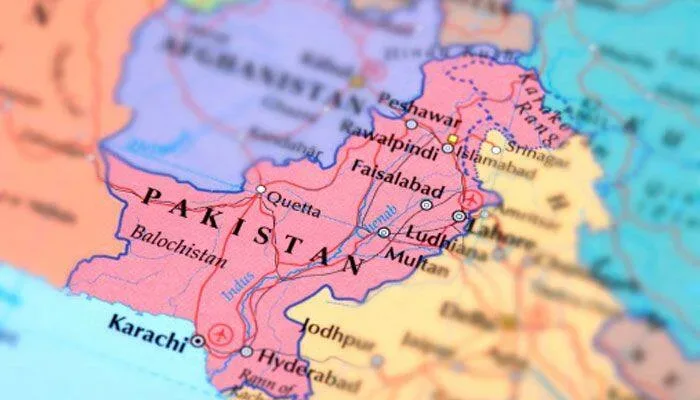The year 2024 was a politically eventful one for Pakistan, marked by critical decisions, power struggles, and pivotal developments that shaped the nation’s political landscape. From economic reforms to judicial controversies and shifting alliances, these events highlighted both the challenges and resilience of the country’s political framework. Here’s a detailed look at the significant political events that unfolded in Pakistan throughout the year.
January: Economic Crisis Sparks Political Debate
The year began with mounting economic challenges as the country grappled with soaring inflation, dwindling foreign reserves, and rising energy prices. These issues dominated parliamentary sessions, with opposition parties blaming the government for mismanagement. The ruling coalition, led by Prime Minister Shehbaz Sharif, introduced austerity measures to stabilize the economy. The International Monetary Fund (IMF) also pressed for structural reforms, which became a contentious topic in political debates. Protests erupted in various cities, with citizens demanding relief from the skyrocketing cost of living.
February-March: Supreme Court’s Rulings Create Waves
In the early months of 2024, Pakistan’s Supreme Court delivered several landmark rulings that sent ripples across the political spectrum. One key ruling addressed electoral reforms, mandating a more transparent process for candidate scrutiny. The decision was hailed by civil society but criticized by certain political parties as overreach.
Another significant ruling pertained to the delimitation of constituencies, which delayed local government elections in key provinces. This led to clashes between the Election Commission of Pakistan (ECP) and opposition parties, further polarizing the political environment.
April-May: Political Turmoil Over Punjab Leadership
Punjab, the most populous province in Pakistan, became a battleground for political supremacy. The provincial assembly saw dramatic no-confidence motions and leadership changes as rival parties fought for control. The ruling coalition’s alliance with smaller parties was tested, while the opposition, led by Pakistan Tehreek-e-Insaf (PTI), gained momentum by organizing mass rallies. This period highlighted the fragility of alliances in Pakistan’s political system.
June-July: Budget Battles and IMF Agreements
The federal budget for the fiscal year 2024-25 was unveiled in June amid intense scrutiny. The government proposed tax hikes and subsidy cuts to meet IMF requirements, sparking heated debates in Parliament. Opposition leaders accused the government of burdening the masses, while the finance minister defended the measures as essential for economic recovery.
Federal Government Set to Announce Petroleum Price Changes on December 31
In July, the government successfully negotiated an IMF bailout package, securing $3 billion to shore up foreign reserves. While this was a relief for the economy, it came at the cost of unpopular reforms, including increased electricity tariffs and fuel prices. The opposition capitalized on public discontent, organizing protests and calling for fresh elections.
August: Security Concerns Take Center Stage
August saw a rise in security concerns as militant activities increased in the tribal areas and Balochistan. The government launched a series of operations to combat terrorism, with mixed results. Political parties united briefly to condemn the violence, but differences emerged over the government’s strategy. The issue of security remained a hot topic in the media, overshadowing other political debates.
September-October: PTI’s Political Revival
After months of political setbacks, PTI saw a resurgence in September and October. Imran Khan, the party’s chairman, returned to the political scene with renewed energy, addressing massive public gatherings and criticizing the government’s economic policies. PTI’s narrative of “corruption-free governance” and “economic justice” resonated with many Pakistanis struggling with inflation.
The party also made gains in by-elections, securing key constituencies and signaling its readiness for the next general elections. The ruling coalition, on the other hand, faced internal dissent as smaller parties expressed dissatisfaction with their share of power.
November: Controversy Over Military Appointments
November brought controversy over key military appointments, a sensitive topic in Pakistan’s political discourse. The appointment of a new army chief and changes in the military hierarchy led to speculation about civil-military relations. The government emphasized its commitment to transparency, but critics alleged political interference in the process.
The military’s role in national politics was debated extensively, with opposition parties accusing the government of using the institution for political gains. This reignited discussions about the need for institutional independence and civilian supremacy.
December: Election Preparations Begin
As the year drew to a close, attention shifted to preparations for the general elections scheduled for mid-2025. The ECP announced the election schedule, promising free and fair polls. Political parties ramped up their campaigns, with leaders touring constituencies and unveiling manifestos.
The ruling coalition focused on highlighting its economic recovery efforts, while the opposition criticized the government’s inability to provide relief to the common man. The political temperature rose as both sides accused each other of planning to manipulate the electoral process.
Recurring Themes in 2024
Throughout 2024, several recurring themes dominated Pakistan’s political landscape:
- Economic Challenges: The government’s efforts to stabilize the economy faced significant criticism, with inflation and unemployment remaining major concerns.
- Judicial Activism: The judiciary played an active role in shaping political developments, leading to debates about its influence on governance.
- Civil-Military Relations: The balance of power between civilian and military institutions remained a contentious issue, impacting policymaking and governance.
- Public Discontent: Protests and rallies became a common sight, reflecting widespread frustration with the status quo.
Conclusion
The year 2024 was a turbulent yet transformative period for Pakistan. It highlighted the resilience of the nation’s democratic institutions while exposing deep-rooted challenges. As the country heads into an election year, the events of 2024 will undoubtedly shape the political narrative in 2025. The coming months will determine whether Pakistan’s political leadership can address the pressing issues facing the nation or if the cycle of political instability will continue. One thing is certain: Pakistan’s political landscape remains as dynamic as ever, with each development closely watched both domestically and internationally.
Follow Day News on Google News, Instagram, YouTube, Facebook, Whats App, and TikTok for latest updates
